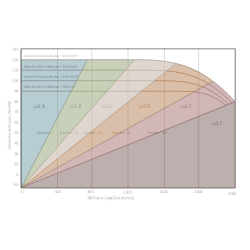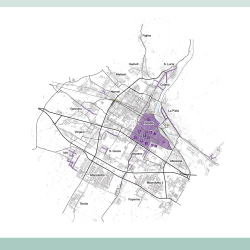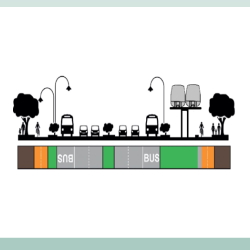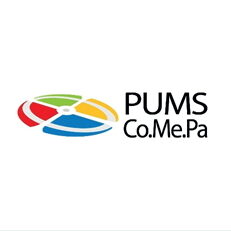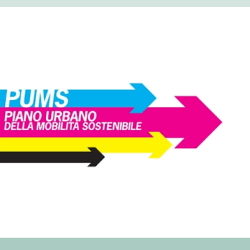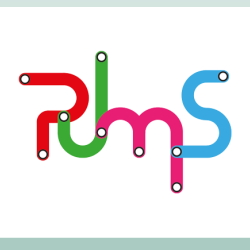- All
- African projects
- assessment
- assessment selected projects
- Assessment selected projects 2
- Assessment selected projects 3
- Assessment selected projects 4
- ASTRA
- Cost Benefit Analysis
- Electric mobility and ITS
- MOMOS
- planning
- planning selected projects
- planning selected projects 2
- planning selected projects 3
- planning selected projects 4
- planning selected projects 5
- projects
- Railways projects
- research
- research selected projects
- research selected projects 2
- research selected projects 3
- studies
- studies selected projects 1
- studies selected projects 2
- studies selected projects 3
- studies selected projects 4
- studies selected projects 5
- TRTingegneria
- TRUST
- urban mobility
- Traffic forecasts for the TiBre motorway interconnection (Italy) Traffic forecasts and analysis of the functionality of the interconnection among the A1, A15 and Tibre motorways (Italy). Key activities: estimating the expected flows at the node for the year 2025 by reviewing previously produced estimates in the preparation of the final design of the interconnection between the Cisa A15 and Brenner A22 motorways, estimation of the levels of service of the entry and exit ramps on the A1 motorway and the entry ramps on the A15 and Tibre motorways, according to the 2000 Highway Capacity Manual methodology, assessment of the functionality of entry ramps of the A1, A15 and Tibre motorways by means of a AIMSUN microsimulation model.
- Transport analisys of the land-side strategies of the Marco Polo Airport (Venice) TRT supported SAVE to define the land-side infrastructure Marco Polo Airport in Venice according to the interventions of both short and medium-long term linked to the new Masterplan Airport. The activity had been divided into two phases, with different methodological approaches: the First Phase aimed at supporting SAVE spa in defining the new Public Transport routes to the terminal and the new parking area of the commercial buses. the Second phase aimed at developing a dynamic microsimulation transport model in order to support of the medium and long term scenarios of the airport Masterplan (2021-2027) defining the performances and the level of accessibility of the land-side transport schemes.
- Prato – Urban Traffic Plan (PGTU) After drawing up the SUMP (a strategic mobility plan with a ten-year validity) approved in 2016, TRT was responsible for preparing the Urban Traffic Plan (PGTU) of the city of Prato, 190,000 inhabitants near Florence, Italy. The PGTU is the “action plan” of the SUMP, thus detailing SUMP short-term actions both in the Reference Scenario and in the Planning Scenario. The activities concerned: the design and supervision of a campaign to detect urban traffic flows at 12 sections and 15 urban intersections; the adaptation to a more detailed scale of the traffic simulation model (AIMSUN, already available at Municipal level) and its calibration; the design of the Reference Scenario, which included actions already approved and financed, and of the Planning Scenario with particular attention to the measures that can be implemented in the short term (road network, public transport, cycling, demand-management policies, parking, urban logistics, ITS), consistent with what has been proposed by the SUMP; the assessment of the planning scenario as well as the preparation of the related indicators and graphic outputs. The PGTU has been approved by the Municipal Council on 27/12/2018 with the act n. 477.
- Shanghai Jinshan Marina Urban Planning (China) Following the winning of the international context by GALA engineering, TRT was selected to carry out the design of road transport network and the Public transport system in the marina of Jinshan New Town, located south of Shanghai. The project integrates two innovative solutions: multimodal transport system with bus, rail and innovative systems dedicated transport system for the cruise port planned to accommodate thousands of tourists daily Area: 2.6 million of square metres Definition of parking areas according to a wide range of functionalities serving more than 150 000 users. Definition of parking pubs to accommodate seasonal touristic flows leaving form the new cruise port Definition of cycling and pedestrian paths to connect the new seaside and the green areas
- Sustainable Urban Mobility Plan – Metropolitan area of Padua’s (Comepa) Following a public tender, TRT, in cooperation with Technital, Atraki and Avanzi, has been commissioned by the Municipality of Padua for the drafting of the new SUMP for Metropolitan area of Padua (CoMePa). The Plan has been approved by the City Council in January 2020. The first phase of activities ended in October 2016 with the completion of the first set of activities: description of the current status of urban mobility, field surveys, organization of participatory events to gather stakeholders positions and construction of the multimodal transport simulation model. The resignation of the City Council in November 2016, led to the suspension of activities. In September 2017, the dialogue within the CoMePa resumed with the aim of proceeding with the drafting of a SUMP, being Padua one of the 18 Municipalities that – on a voluntary basis – started the process of transport planning at metropolitan scale. In 2018 the SUMP was completed with the Plan Proposal presented to the technical and political bodies of the Municipalities of the Padua metropolitan area. The Plan Proposal was discussed in different meetings with technical and political bodies of CoMePa . The third phase was completed with the quantitative assessments of the Plan interventions and the drafting of the final document of the PUMS to be adopted and approved by the Municipalities . The participatory process adopted for the SUMP development led to the inclusion of different measures to encourage the transition towards low carbon mobility through: modal shift actions; the introduction of a vehicle access control area (Low Emission Zone -LEZ) for Padua; the promotion of penetration of electric traction and low environmental impact vehicles in the central area. For more information Documents available on padovanet.it (only available in italian) “Sustainable Urban Mobility Plan (SUMP) of Padova and metropolitan area”. Case study published on Eltis Platform
- Drafting of the Sustainable Urban Mobility Plan of the city of Parma (Italy) Following a public tender, TRT has been selected by the City of Parma for the drafting of the new SUMP. The first step has led to the definition of the strategic guidelines of the Plan while, during 2016, the SUMP has been drafted in a pre-approval form. The SUMP process has been developed through the following activities: reconstruction of the knowledge in the area of transport and mobility; analysis of its strengths and weaknesses; identification of targets that have been selected by policy makers, stakeholders and citizens (that have contributed through the on-line survey conducted in support to the SUMP); drafting of the SUMP guidelines that have been approved by the City Council (Sep. 2015); definition of the alternative SUMP scenarios (successively shared among policy makers, stakeholders and citizen representatives); technical, economic, environmental and social evaluation of the SUMP scenarios; identification of the best SUMP scenario. The Plan has been officially approved by the City Council on 21st March 2017 and has undergone a SEA (Strategic environmental assessment). For more information Documents available on comune.parma.it (only available in italian) “Parma’s SUMP: the first in Italy combined with a Strategic Environmental Assessment”. Case study published on Eltis Platform TRT was commissioned in 2019 to coordinate the implementation and monitoring of Parma’s SUMP and was also responsible of the drafting of the General Urban Traffic Plan of the city of Parma.
- Alessandria – Sustainable Urban Mobility Plan and updating of the Urban Traffic Plan The Municipality of Alessandria awarded TRT to draft the Sustainable Urban Mobility Plan (SUMP) and to update the Urban Traffic Plan (UTP). The SUMP-UTP process was developed along four steps: the background analysis of the mobility-related sector and its environmental, social and economic impacts in Alessandria, including the development of extensive surveys (traffic, parking supply and demand, public transport passengers counts); the identification of the strategies for the construction of the SUMP/UTP scenarios, as a result of the background analysis as well as the objectives and the priorities raised by the local Administration; the design of different scenarios: reference solution and SUMP scenario (short period – 2 years and long period – 10 years); the evaluation of the alternative scenarios through the implementation of an AIMSUN transport model for the urban area. In addition, specific detailed documents such as the Parking Plan and the Urban Public Transport Plan have been developed. The SUMP-UTP was adopted with resolution no. 168/16110-220 of the City Administration on 9/06/2017. Following the establishment of a new municipal administration, in 2019 TRT subsequently updated the plan and supported the administrative process of the new version until the final approval. After the adoption in September 2019, the updated SUMP-UTP document in its final version was approved by the City Council on 10/06/2020 with resolution no. 31
- Preparation of the Urban Mobility Plan of the city of Prato in Italy TRT, as a result of a tendering procedure, has been selected by the City of Prato to support their offices in the preparation of the SUMP. The Plan takes as reference methodology the “SUMP guidelines” prepared by the EU Commission (with the contribution, among others, of TRT). The SUMP process has been developed in four steps: background analysis of the mobility-related framework and its environmental, social and economic impact in Prato; identification of the strategies for the construction of the SUMP scenarios, as a result of the background analysis, the selected objectives and the priorities raised through public listening (surveys and thematic/territorial focus groups); design of two different scenarios: reference solution and SUMP scenario – the latter is characterised by a set of coherent transport measures aimed at achieving specific objectives; evaluation procedure, implementing a ex ante transport model (AIMSUN) and a policy evaluation procedure (MOMOS) derived from the Urban Road Map 2030 tool. The SUMP of Prato has been presented to the local community, stakeholders and decision makers in October 2016. The Plan has been approved by the City Council in June 2017. TRT was also responsible of the drafting of the Parking Master Plan and the Urban Traffic Plan of the city of Prato In 2022, TRT also drafted Prato’s e-Mobility Plan and the SUMP monitoring report in accordance with the indicators of DM 396 of 28/08/2019. For more information (Only available in italian) Official SUMP webpage hosted in the website of the Municipality. It contains all the information related to the SUMP process in Prato Webpage where project deliverables and annexes can be found Link to download the final SUMP document
- Financial and business model for a bike station to be realised next to the «Milano Lambrate» railway station The study focused on the definition of a financial and business model for the set-up of a bike station (a safe parking for bicycles, accompanied and supplemented by complementary activities), with particular reference to the case of Lambrate railway station, a strategic public transport node in the city of Milan. The financial and business model has been developed in order to maintain a modular and parametric approach, as well as to provide the transferability of results to other similar contexts.

